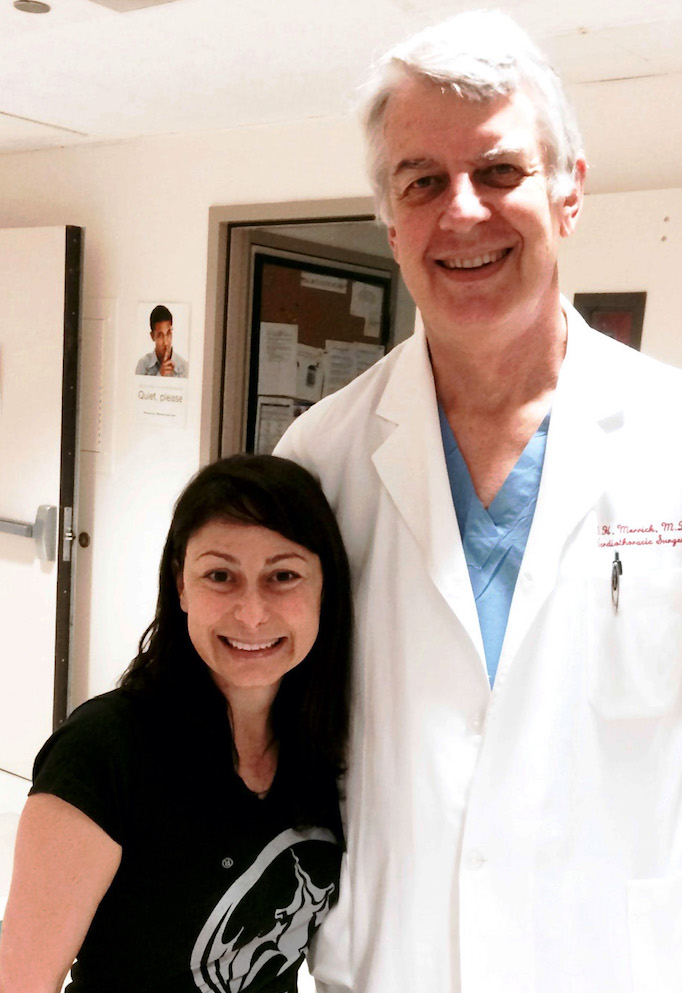Supravalvular Aortic Stenosis
Supravalvular aortic stenosis (SVAS) is a heart defect that develops before birth. This defect is a narrowing (stenosis) of the large blood vessel that carries blood from the heart to the rest of the body (the aorta). The condition is described as supravalvular because the section of the aorta that is narrowed is located just above the valve that connects the aorta with the heart (the aortic valve). Some people with SVAS also have defects in other blood vessels, most commonly stenosis of the artery from the heart to the lungs (the pulmonary artery). An abnormal heart sound during a heartbeat (heart murmur) can often be heard during a chest exam. If SVAS is not treated, the aortic narrowing can lead to shortness of breath, chest pain, and ultimately heart failure.
The severity of SVAS varies considerably, even among family members. Some affected individuals die in infancy, while others never experience symptoms of the disorder.
How common is supravalvular aortic stenosis?
SVAS occurs in 1 in 20,000 newborns worldwide.
What genes are related to supravalvular aortic stenosis?
Mutations in the ELN gene cause SVAS. The ELN gene provides instructions for making a protein called tropoelastin. Multiple copies of the tropoelastin protein attach to one another and are processed to form a mature protein called elastin. Elastin is the major component of elastic fibers, which are slender bundles of proteins that provide strength and flexibility to connective tissue (tissue that supports the body's joints and organs). Elastic fibers are found in the intricate lattice that forms in the spaces between cells (the extracellular matrix), where they give structural support to organs and tissues such as the heart, skin, lungs, ligaments, and blood vessels. Elastic fibers make up approximately 50 percent of the aorta, the rest being primarily muscle cells called vascular smooth muscle cells that line the aorta. Together, elastic fibers and vascular smooth muscle cells provide flexibility and resilience to the aorta.
Most of the ELN gene mutations that cause SVAS lead to a decrease in the production of tropoelastin. A shortage of tropoelastin reduces the amount of mature elastin protein that is processed and available for forming elastic fibers. As a result, elastic fibers that make up the aorta are thinner than normal. To compensate, the smooth muscle cells that line the aorta increase in number, making the aorta thicker and narrower than usual. A thickened aorta is less flexible and resilient to the stress of constant blood flow and pumping of the heart. Over time, the wall of the aorta can become damaged. Aortic narrowing causes the heart to work harder to pump blood through the aorta, resulting in the signs and symptoms of SVAS.
Read more about the ELN gene.
How do people inherit supravalvular aortic stenosis?
This condition is inherited in an autosomal dominant pattern, which means one copy of the altered gene in each cell is sufficient to cause the disorder. However, some people who inherit the altered gene never develop features of SVAS. (This situation is known as reduced penetrance.)
In some cases, a person inherits the mutation from one parent who has the mutation. Other cases result from new mutations in the gene and occur in people with no history of the disorder in their family.
Where can I find information about diagnosis or management of supravalvular aortic stenosis?
These resources address the diagnosis or management of supravalvular aortic stenosis and may include treatment providers.
- Children's Hospital of Philadelphia

- Genetic Testing Registry: Supravalvar aortic stenosis

- Monroe Carell Jr. Children's Hospital at Vanderbilt

You might also find information on the diagnosis or management of supravalvular aortic stenosis in Educational resources and Patient support.
General information about the diagnosis and management of genetic conditions is available in the Handbook. Read more about genetic testing, particularly the difference between clinical tests and research tests.
To locate a healthcare provider, see How can I find a genetics professional in my area? in the Handbook.
Where can I find additional information about supravalvular aortic stenosis?
You may find the following resources about supravalvular aortic stenosis helpful. These materials are written for the general public.
- MedlinePlus - Health information (2 links)
- Genetic and Rare Diseases Information Center
 - Information about genetic conditions and rare diseases
- Information about genetic conditions and rare diseases - Additional NIH Resources - National Institutes of Health National Heart Lung and Blood Institute: What is a Heart Murmur?

- Educational resources - Information pages (7 links)
- Patient support - For patients and families (2 links)
You may also be interested in these resources, which are designed for healthcare professionals and researchers.
- Genetic Testing Registry - Repository of genetic test information (1 link)
- ClinicalTrials.gov
 - Linking patients to medical research
- Linking patients to medical research - PubMed
 - Recent literature
- Recent literature - OMIM
 - Genetic disorder catalog
- Genetic disorder catalog
What other names do people use for supravalvular aortic stenosis?
- aortic stenosis, supravalvular
- stenosis, aortic supravalvular
- stenosis, supravalvular aortic
- supravalvular stenosis, aortic
- SVAS
For more information about naming genetic conditions, see the Genetics Home Reference Condition Naming Guidelines and How are genetic conditions and genes named? in the Handbook.


